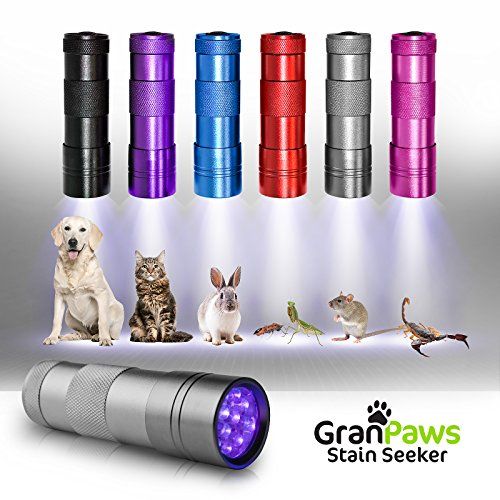Since certain bodily fluids can transmit certain sickness causing bacteria and viruses a blacklight can also help you detect potentially threatening bodily fluids.
Black light for bacteria detection.
Black lights detect items that contain fluorescers within them when the uv rays from the light shine on them.
Also known as ultraviolet light black light causes various materials to fluoresce or radiate visible light in total darkness.
A uv light source causes the blood stains to absorb all light and appear black.
Vansky flashlight black light 51 led blacklight detector for dog cat urine dry stains bed bug matching with pet odor eliminatornator eliminator uv 2.
Club soda and all liquids containing quinine.
Taotronics tt fl002 black light 51 leds uv blacklight flashlights detector for dry pets urine stains bed bug with uv sunglasses 3 aaa batteries 4 5 out of 5 stars 4 177 14 99 14.
38 268 00 100 cm 12 99 12 99.
The absorbed energy is then emitted as visible light.
Professional uv lights emitting wavelengths ranging from 386 to 400 nanometres are suitable for detection of bacteria in the home.
Get it as soon as tue sep 29.
It can also detect blood though not through fluorescence.
However the blacklight should not be seen as a detector that specifically illuminates bacteria and viruses it only illuminates fluorescent bodily fluids that can potentially contain said bacteria and viruses.
Many body fluids contain fluorescent molecules.
38 268 00 100 cm 12 99 12 99.
Saliva semen urine and blood.
Well now you can.
Amazon s choice for bacteria light detector.
Forensic scientists use ultraviolet lights at crime scenes to find blood urine or semen.
4 4 out of 5 stars 11 798.
Some of the spills a person might find with a black light include.
Vansky flashlight black light 51 led blacklight detector for dog cat urine dry stains bed bug matching with pet odor eliminatornator eliminator uv 2.
This is a new tool in the battle against germs.
Use the black light germ detector to see what you can t see with the naked eye.
Perform a preliminary cleaning and preparation of the home.
Blood does not glow under a black light but it reacts with a chemical that does fluoresce so it can be detected after this reaction using ultraviolet light at a crime scene.















































